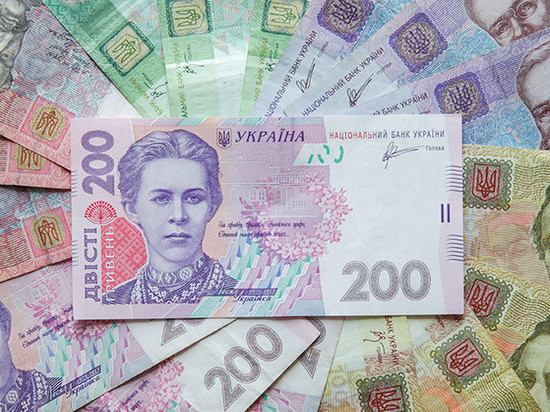Named the amount of public debt of Ukraine
[ad_1]

If not for the West, the country has long since plunged into default
Being in debt, like in silks, is a familiar state for Ukraine. Ukrainians have been hammered in for almost thirty years in a row: all countries, they say, live in debt, starting with the United States. And those “originals” who are obsessed with the idea of paying off all creditors at all costs “end up badly.” As the most intelligible example, they usually cite the geographical neighbor Romania of the times of Nicolae Ceausescu. By the end of the 1980s, the Socialist Republic of Romania had done what seemed impossible: it had paid off all its debt obligations. And, imagine, the “reward” was not long in coming: a popular uprising, defeated cities and villages, an army that went over to the side of the people, and as a natural result, the execution of Ceausescu himself and his wife Elena …
The latest data on the size of Ukraine’s public debt – as of July 31 – can be found on the official website of its Ministry of Finance. So, the state-guaranteed debt by the end of the month before last amounted to 347 billion 450 million hryvnias (or $10.24 billion). The state-guaranteed foreign debt of Ukraine in this amount is UAH 304 billion 230 million. ($8.32 billion), and state-guaranteed domestic debt – 70 billion 220 million hryvnia ($1.92 billion).
Even more depressing are the figures characterizing the just described government-guaranteed debt in conjunction with Ukraine’s public debt. This is neither more nor less than 3,164.84 billion hryvnias or 86 billion 550 million US dollars. I note: the state of the state and state-guaranteed debt is determined in hryvnias and US dollars at the rate of the National Bank of Ukraine on the last day of the reporting period and includes transactions for that day (in our case, July 31). The exchange rate of the “American ruble” has noticeably jumped in 2 months. Bank quotes published by all Ukrainian information portals differ from the real position of the hryvnia on the black market. For one dollar, they are about to start demanding 45, despite the fact that the soothing rates of the most famous banks fluctuate between 36 and 37 and a half hryvnias. per dollar. It turns out that the national Ukrainian currency has “dipped” into an abyss that is much deeper than it is being portrayed by the Internet media. Well, Ukraine’s debt itself takes on even more frightening contours. External government debt should also include debt on external government bonds issued by Ukraine in the period from 2013 to 2021.
As recently as September 22, $30 million “for investing in promising technologies and export-oriented companies in Ukraine” deigned to allocate the World Bank. Which has been defiantly “cautious” since February 24, from the day the NWO began. Among other major creditors of the republic are the European Bank for Reconstruction and Development, the European Investment Bank, the European Union, the International Bank for Reconstruction and Development. They systematically “throw” money in the form of loans from the governments of Great Britain, the USA, Germany, France, Japan, Poland. External public debt is also growing due to loans from Deutsche Bank (Germany), Credit Agricole Corporate and Investment Bank (France), Chase Manhattan Bank (USA) and other foreign commercial banks and financial institutions.
Citizens of Ukraine, who are more or less versed in economic issues, understand that the reference to the United States, which “also lives in debt – and nothing” is incorrect. The thoughtless accumulation of debts does not threaten developed countries in any way – in contrast to states like today’s Ukraine. The republic, which has been living in a state of hostilities for more than 8 years, must be ready for the most unpleasant “surprises” at any moment.
The fact is that in the 21st century, when “everyone owes everyone”, the truth by default is always on the side of creditors. Should Nezalezhnaya’s senior leaders have any misunderstanding with the West, a number of creditors may resort to “tightening the screws”, that is, to enforce debt contracts.
Zelensky and the company will have to urgently decide which segments of the state infrastructure can be sacrificed to extinguish the fire.
The transfer to creditors, for example, of the national power grid system is associated with an inevitable conflict between the state and a number of oligarchs who own many of the Ukrainian oblenergos. First of all, we are talking about Rinat Akhmetov, who is still the wealthiest of the current billionaires in the post-Soviet republic.
The media possibilities of Rinat Leonidovich are now somewhat subdued. And they no longer guarantee the possibility of raising at least a local rebellion against the redistribution of private property. Therefore, even with a default, President Zelensky is not currently in danger of an internal split.
In the meantime, my compatriots earn an average of 14 thousand hryvnia per month. The debt of each – if we imagine that this is not the debt of the state, but of each of its citizens – is about 60 thousand hryvnias. In addition to the need to constantly repay it (or service the borrowing), a person must also at least buy food and pay for utilities. After all these spending on repayment of loans, there will be nothing left. So, you have to borrow again …
[ad_2]
Source link






